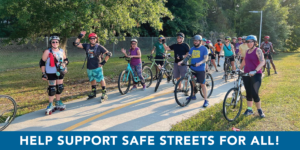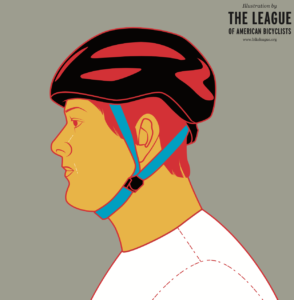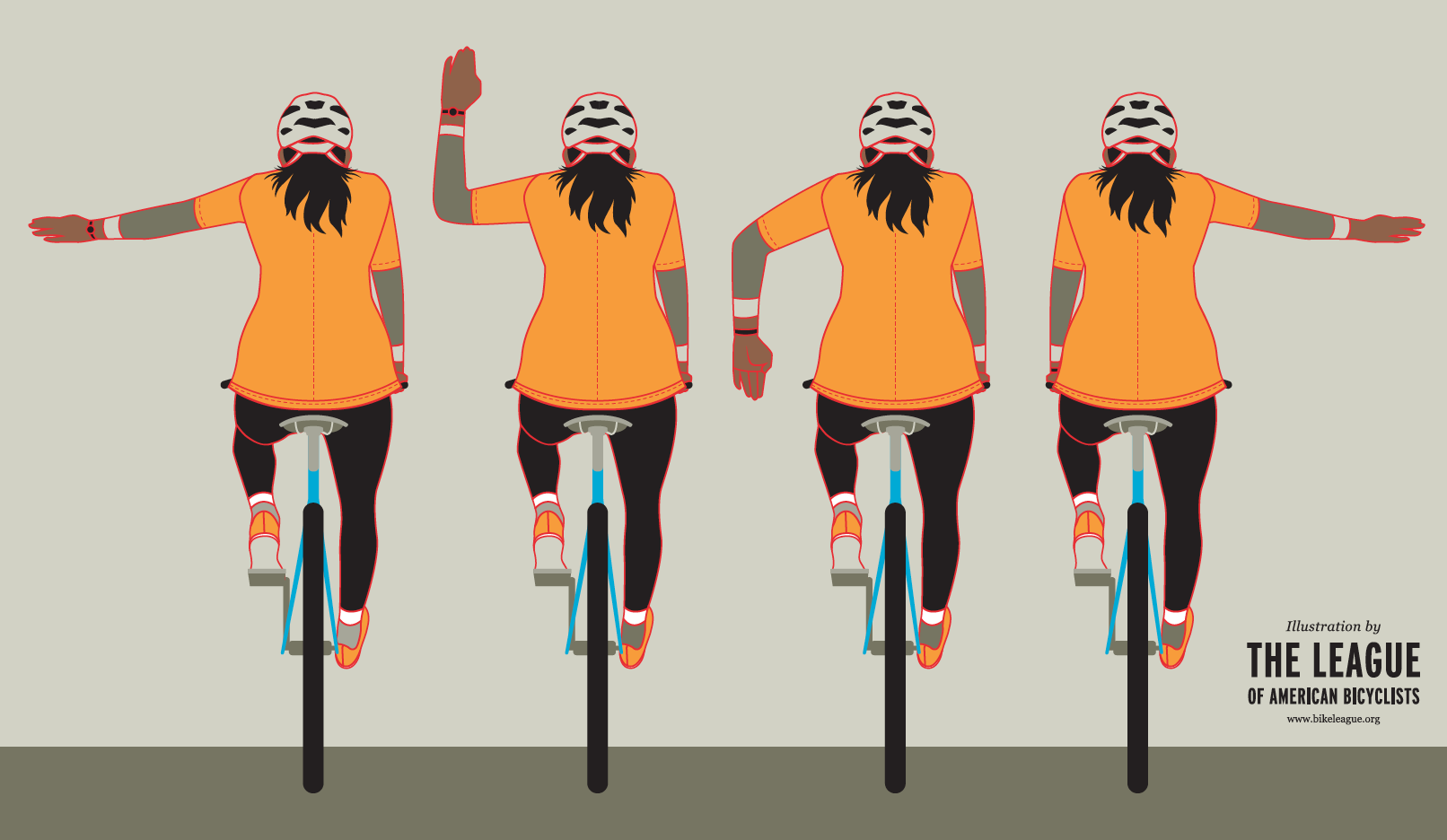
You should always let others know when you are turning, changing lanes or stopping — both for safety reasons, and because it’s the law.
While cars and motorcycles have devices built in, like turn signals and brake lights, we have to rely on our arms to signal our intent on a bike.
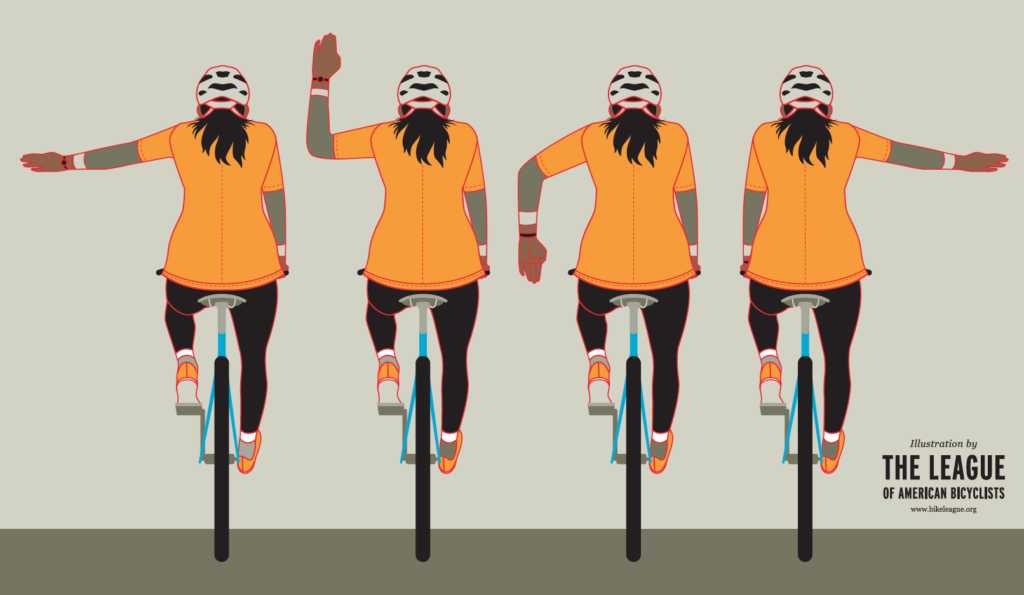
Signaling
- Left Turn: Fully extend your left arm out to the side.
- Right Turn: Fully extend your right arm out to the side or bend your left arm up at a right angle with your hand flat. Both are legal signals, and depend on your level of comfort with which arm you use.
- Slowing or Stopping: Extend your left arm at a right angle with your hand open and pointing down towards the ground.
Scanning
Scanning is the act of looking over your shoulder, and is a key part of riding anywhere. It helps communicate your intentions to others and also shows you what is happening behind or around you.
Pro Tip: It may be difficult to scan and maintain a straight line while riding. Start by practicing scanning on a stationary bike to see your range of motion. You may want to purchase a mirror to help if you have limited range. Once you start practicing on a moving bike, if you have trouble maintaining a straight line you may want to try removing your hand (from the direction you are scanning) from the handlebars and place it on your lower back. This helps prevent your body from fully turning and pulling the handlebars. And make sure to keep peddling while scanning!
Scanning should be used in conjunction with signaling — you should scan before any turn and before making any signal.
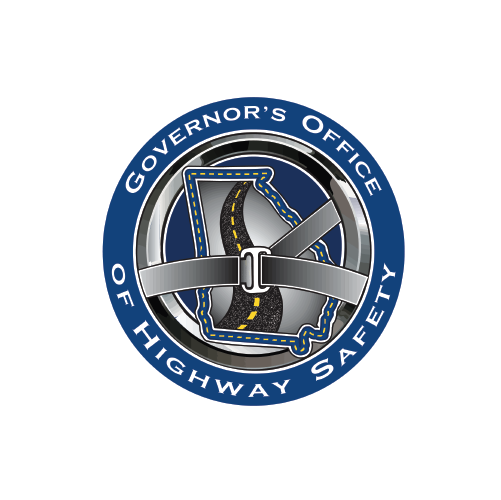
This blog post is sponsored in part by a generous grant from the Governor’s Office of Highway Safety.




